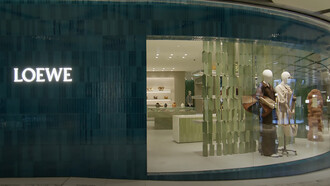Gold is the key, whatever else we try; and that sweet metal aids the conqueror in every case, in love as well as war.
(Molière)
Our fascination with gold goes back thousands of years. Due to its rarity and difficulty of smelting, this naturally occurring element acquired a special status in Eastern and Western cultures. From Ancient Egypt to the First Central Bank Gold Agreement, from the funeral mask of Tutankhamun to the wedding ring, through legends and wars, riches lost and found, gold has maintained its intrinsic and perceived value. The ancient Greeks and Romans, as well as the Chinese, made currency from gold. In the hierarchical and status conscious society of Medieval Europe, gold was used to symbolise status: royalty and aristocracy wore gold, the lower classes made do with lower class materials. The shine of gold, its indestructability and scarcity made it a suitable material for representing divine qualities. In places of worship, even in a religion that promoted the renunciation of worldly goods, the objects associated with the sacred rituals (crosses, liturgical vessels) were made of gold. The adoration of divinity was often expressed by covering paintings and sculptures in gold leaf.
Adorning the Body
“Gold makes the ugly beautiful” declared Molière. And the beautiful even more so, he could have added. The demand for adornments, from diadems to toe rings, in order to make ourselves more beautiful is as old as humanity. Jewellery was made of colourful stones, shells, dry vegetation and any other attractive looking material. But since the taming of gold, master jewellers never looked back; they were able to create brooches, pendants, bracelets, necklaces, earrings of various sizes, to respond to the demands of fashion and human emotion. Malleable and ductile, gold is a material favoured by artists and craftsmen. From abstract to flowers and animals, from the purely ornamental to the functional – gold jewellery has never been out of fashion.
We believe that “you can’t take it with you” – in reference to material riches. But ancient civilisations disagreed; thanks to the custom of burying the dead with their gold, to accompany them on their journey into the afterlife, archaeologists were able to find well preserved gold jewellery in tombs and hoards.
After the restrictive period of the Middle Ages, gold jewellery experienced a …golden period during the Renaissance as it reflected the times’ love of splendour. Later, as new techniques developed, jewellers embraced other materials – like colourful gems or less glamorous, but with extensive decorative and creative possibilities, plastic and wood.
Home, Golden Home
But the display of wealth was not restricted to expensive jewellery pinned onto the corset. At the end of the 18th century, the Parisian nobility and the growing bourgeoisie lived in large houses of 2-3,000 square metres, and they loved entertaining at home. It was an opportunity to show their riches and exquisite taste in interior decoration. Gold played an important part. Chandeliers, candelabra, statues, clocks, the legs of tables, columns and vases were mounted in bronze and gilded. Parisian metalworkers developed extraordinary skills and creativity in the production of these works of art. These objects didn’t only look attractive and expensive – they also contributed to the interior ambience, by reflecting the flames in the fireplace, the flickering of candles and the sparkle on the ladies’ corset broches and their hairpieces. From London to St Petersburg, connoisseurs and followers of fashion from all over Europe came to Paris to be inspired by or purchase gilded bronze works by masters such as Pierre Gouthiere.
Parisian luxury
“Paris is the world” declared Marivaux in 1734 “the rest of the earth is nothing but its suburbs”. Gouthiere was doreur du roi, the king’s gilder, appointed by Louis XV. He also worked for the duc d’Aumont, the duchesse de Mazarin and Madame du Barry, Louis XV’s maitresse en titre. He developed a technique of gilding that left a matte finish and he combined polished with matte finish to achieve interesting effects. Gouthiere made many types of objects, including furniture, ornaments for mantelpieces, vases, firedogs, candelabra, wall lights and clocks – so valuable that soon there were many copies of his work. However strong the emphasis on beauty and luxury, it is interesting to note that all the gilded objects had a definitive functional role in the household.
The mantel clock commissioned by the council of Avignon as a gift to the city’s governor is a beautiful example of Gouthiere skills in bringing to life human and vegetal form to create movement in a complex composition. One of the main advantages of gilt was its versatility – it could be used to enhance other materials: marquetry, lacquer cabinets, porcelain vases were mounted in bronze, turning into objets d’art and occasionally forsaking their original function. Like the pair of Sevres porcelain vases mounted as ewers; the shape has been altered by the addition of a gilt-bronze handle in the form of a sensuous female figure. This purely decorative pair was made for the marchand mercier Dominique Daguerre.
Purveyor of luxury decoration and interior designer to the rich and famous, Daguerre was considered an arbiter of taste. In 1778 he moved to London and set up in Sloane Square, while retaining his Paris partnership, so he continued to bring pieces from Paris. A visionary merchant, Daguerre was a pioneer of the French luxury goods concept, importing furniture and art objets from France, for clients such as King George IV, while continuing to supply Louis XVI and Marie Antoinette.
The French Revolution put an end to his success in business – as it put an end to many of his more important clients. It marked the end of bling and the start of the Age of Reason.















